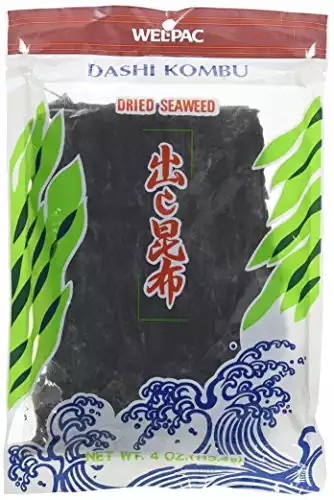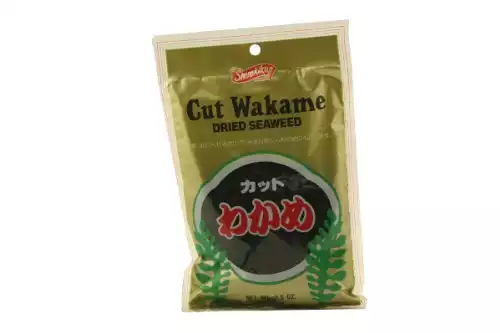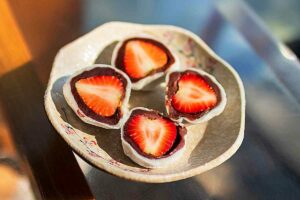Wakame and kombu are both types of seaweeds that are widely consumed not only in Japan but also in other parts of the world.
Seaweeds are edible algae, and they are a culinary staple for both the Celtic and Eastern cuisines.
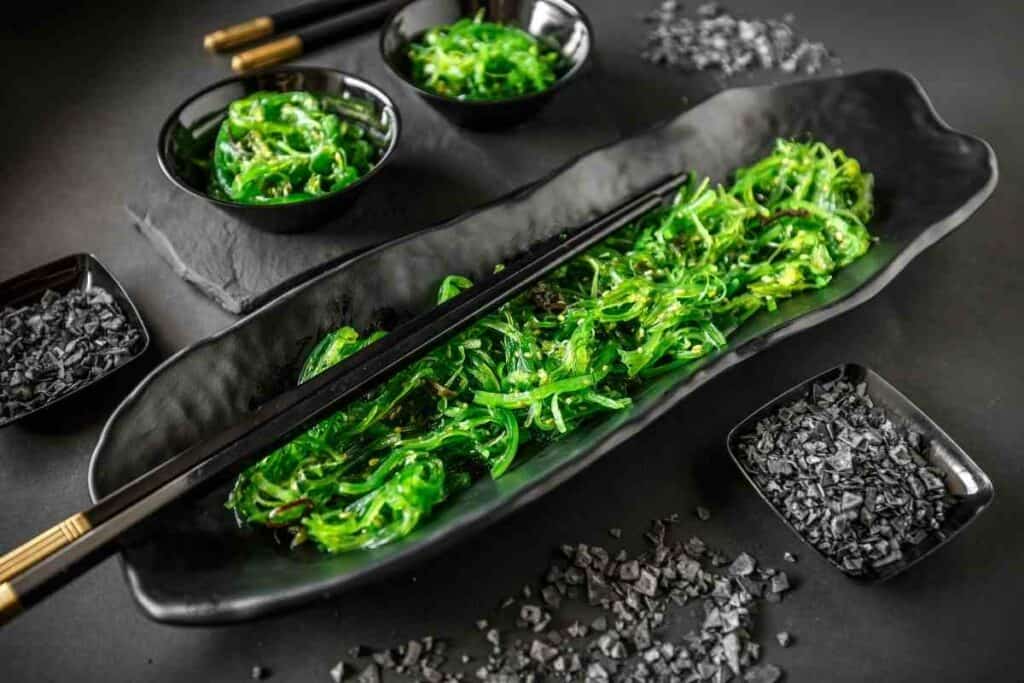
Since they are both seaweeds, wakame and kombu have a couple of similarities.
For instance, they both belong to the brown algae family, and they both have healing abilities.
However, that is as far as their similarities go. Wakame and kombu are very different in texture, taste, and uses.
Table of Contents
What Is Wakame?
Wakame is a type of sea lettuce that is predominantly found in Australian waters.
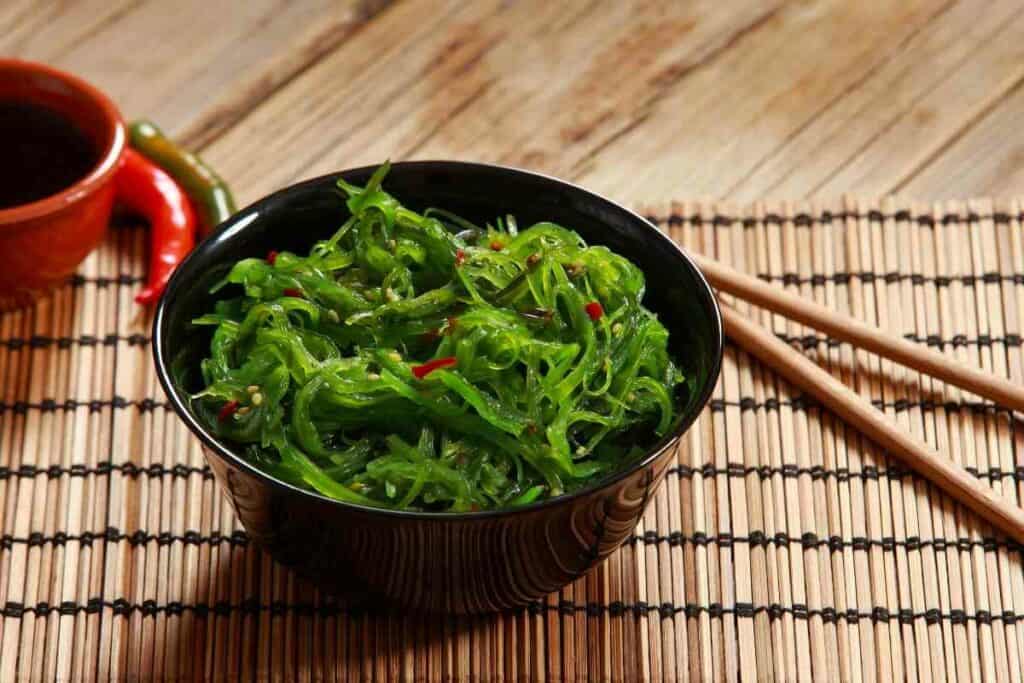
Since it is widely used in making Asian dishes, it is farmed in various parts of Korea and Japan.
In Japan – Wakame is mostly farmed in the Naruto strait and the coast of Sanriku.
The seaweed has a rich green color and a chewy texture. It can be either sold fresh or dried and frozen.
Wakame is mostly used to make soup, specifically miso soup. It is also used to make salads, as a seasoning, or as a side dish to seafood such as sushi.
|
4.5
|
4.6
|
|
$8.69 ($2.17 / Fl Oz)
|
$5.76 ($2.30 / Ounce)
|
What Is Kombu?
Kombu is dried kelp and is one of the major ingredients for making a popular Japanese soup known as dashi.
Dashi is basically soup with a meaty flavor, or umami, as it is referred to in Japan.
Apart from being a base for preparing broth, kombu is also used in vegetables, meat, and noodle dishes such as ramen.
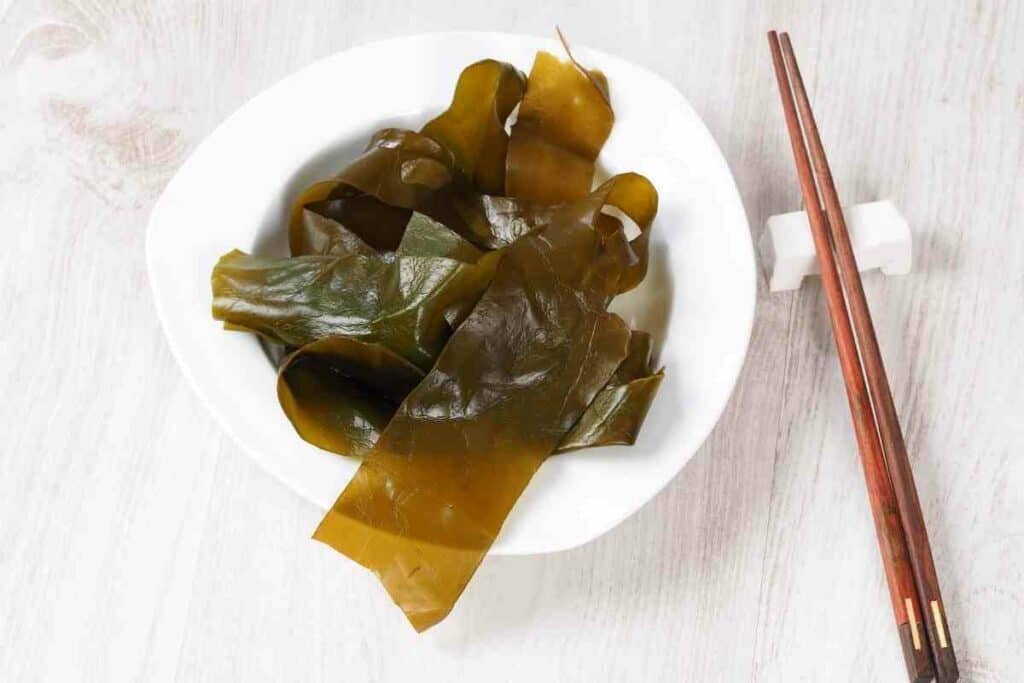
Kombu is harvested by sea farmers in Japan, particularly in the Hokkaido region.
This seaweed is also popular in other Asian countries like Thailand and China.
The older kombu is, the more nutritious it is and, subsequently, the pricier it gets.
If you want kombu to last long, keep it off light and moisture. The result will be dry and crunchy strips.
What Are the Differences Between Wakame And Kombu
Despite both being seaweeds, wakame and kombu could not be more different from each other.
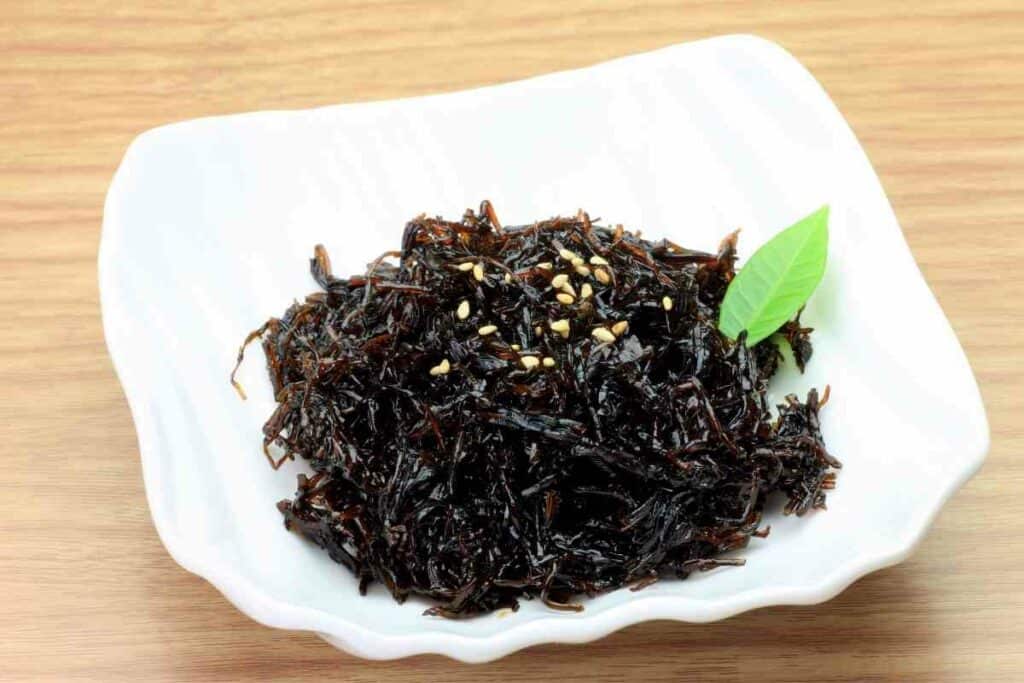
The following are ways through which the two members of the brown algae family differ from each other.
Appearance
Kombu is one thick leaf with two layers, such that it can open like an envelope, whereas wakame is made up of several thin leaves.
Use
Kombu is mainly used to make soup stock and is known to be a major component of dashi soup.
It is also used to make certain foods, such as beans, digestible. On the other hand, wakame is used as a base for miso soup, some salads, and to make seasonings.
Taste
Wakame has a deep flavor and a relatively sweet taste.
Since it comes from the sea, wakame also has a taste of the sea, but without the fishiness. Elsewhere, kombu has a soft flavor and is a little salty.
Texture
Usually, kombu is dried, so it is crunchy with a soft touch.
On the Other Hand – Wakame is often tender and stringy. It can also be described as slimy, and it may even be slippery in the mouth.
Storage
Kombu and wakame thrive in different storage conditions.
Kombu requires a dry, air-sealed environment for it to last long.
As for wakame, boil it briefly until it turns bright green, then cut it into small pieces before freezing it.
How To Use Wakame
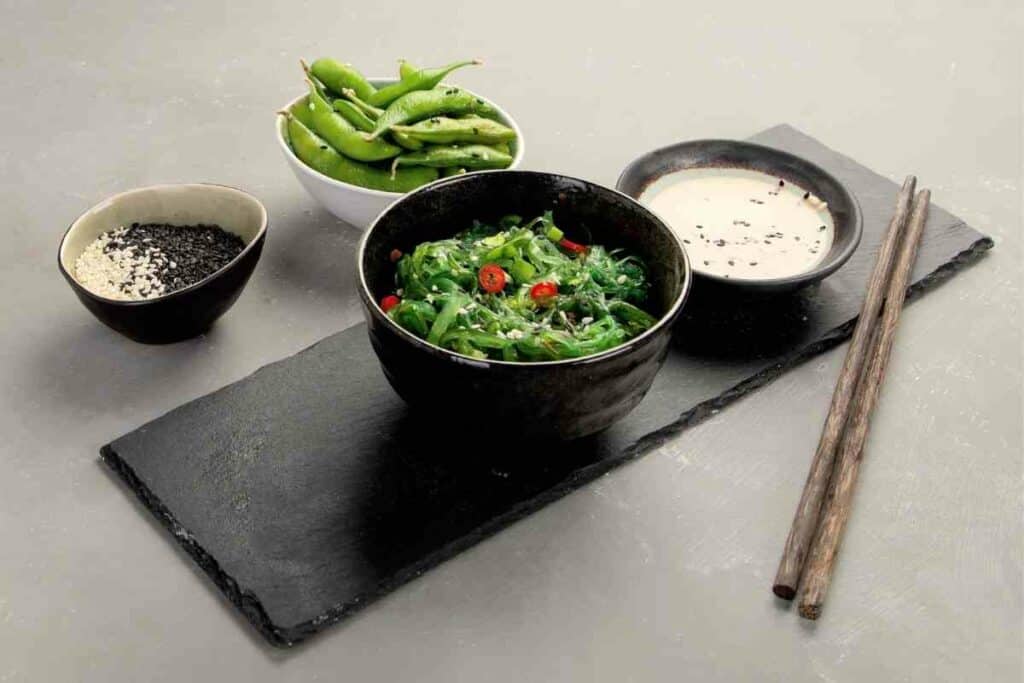
Before using wakame to make any dish, you should reconstruct it.
Reconstruction involves putting it in a bowl of water and letting it sit for a few minutes.
After that, hydrate the seaweed, then drain the water. Note that wakame expands when put in water, so you would not need a lot of it.
The most popular use of wakame is making miso soup. It can also be used in the preparation of vegetables to add a flavourful aroma.
In Addition – You can use this seaweed with sesame oil to make a salad, which you can dress with vinegar and soy sauce.
Another way to use wakame is to make sunomono – a salad of marinated cucumber. Finally, you can roast wakame with oil and salt to make wakame chips.
How To Use Kombu
When you get your hands on kombu, you should wash it and put it in a building pot with water.
Here, let it simmer for 4 to 5 hours without letting it boil.
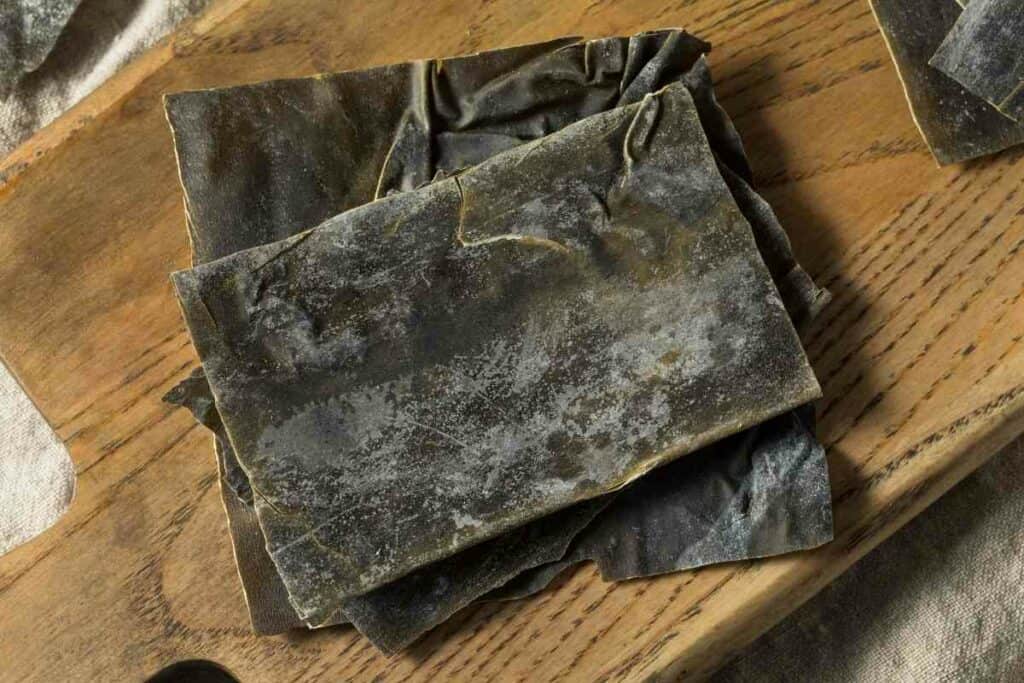
When you take it off the heat, let it sit in the water for a few more hours before straining it into another pot. You can then use it whenever you need it.
Kombu is mostly used as a basis for dashi broth. Besides dashi, you can also use it in the preparation of clear soup.
Moreover, you can add some kombu to dried tuna flakes for that salty, soft flavor. Dried kombu can also be used as a vegan stock cube in stews.
Can You Substitute Kombu for Wakame?
Even though they belong to the same family of seaweeds, you cannot substitute kombu for wakame.
You will most certainly notice the difference.
Elevate your culinary creations with WEL-PAC Dashi Kombu Dried Seaweed, perfect for enhancing the flavor of soups and stews, or for crafting delicious kombu broth when boiled in water.
For starters, they have different tastes – wakame is sweet compared to kombu. Also, kombu is crunchy, whereas wakame is slimy, especially after soaking in warm water.
The two also serve different purposes in Japanese cuisine.
For Instance – Kombu is mainly an aromatic flavoring base for soups like dashi.
Wakame adds flavor to miso soup and salads. The best substitute for kombu would be bonito flakes.
You can substitute wakame with a similar seaweed called Alaria esculenta.
Where Can You Get Wakame and Kombu?
There are several places where you can get wakame and kombu.
If you can’t find them in the local stores, you are unlikely to miss them in Japanese grocers such as:
- Tokyo mart
- Northbridge
- Fujimart
- Prahran
You can also get these seaweeds from online stores such as eBay and Amazon.
Don’t miss the opportunity to add this culinary gem to your pantry today!
Final Thoughts
Wakame and kombu are both important components of Japanese cuisine.
They are flavorful edible seaweeds that are used to make soup, salads, and vegetables.
While they are both nutritious and known to improve one’s health, they are distinctly different from each other.
Their differences range from appearance to taste, uses, texture, and storage. Thus, you cannot possibly substitute one for the other.
- Bubble Tea vs Boba Compared: What’s the Difference?
- Best Izakaya Foods for a Relaxed Night Out (My Top 10 Picks)
- Edo Kiriko Whiskey Glasses (Japanese Heritage in Every Pour)
- Japanese Viral Foods on Social Media (Discover the Top 10)
- Amezaiku: 10 Amazing Examples of Japanese Candy Art
- 25 Must-Try Japanese Desserts: Old and New

